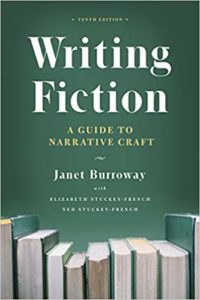For this week’s hot writing craft tips, let’s look even more closely and with a sculptor’s eye at words and sentences and paragraphs.
Diction and Syntax
Diction (word choice) and syntax (sentence structure) are more than just grammar terms – they are the materials writers use to shape thought. By understanding and using how the brain processes written information, you can connect more effectively with your readers.
The most important word in a sentence is the first (noun). The second most important word in a sentence is the last. These two words should be strong and solid. Here’s an example from THE ARTIFACT HUNTERS: “Isaac’s childhood stood on the far side like a long-ago tale.” By beginning and ending the sentence the nouns “childhood” and “tale” immediately connect the reader to the fairy tales of their own childhood.
Verbs are best when active, not passive. Here’s another example from THE ARTIFACT HUNTERS: “In the dusky light the castle hulked against the sky.” I could have said “was silhouetted” but “hulked” gives the castle more menace, and it feels more alive, in a creepy way.
Avoid distancing the reader by avoiding the use of words like “saw”, “heard”, and “felt”. Again, in ARTIFACT HUNTERS, I said, “Nausea roiled through Isaac.” I could have said, “Isaac felt nauseous” but you can see right away how that distances the reader from Isaac’s immediate sensations.
When Every Word Matters
It took me several years to write VOLCANO DREAMS. I removed many more words than I added. Every single sentence, every single word has to be just right – especially in the case of a non-fiction, scientifically-accurate book like this. For example, “The elk tucks his bulk into feathered grass” implies the size of the animal (with a little internal rhyme) and the age of the grass (feathered being a mature, late-summer grass).
Picture books must be particularly tight in all the ways I’ve described above. And more – in a picture book, assuming you aren’t the illustrator, you must leave room for the illustrator to interpret and enlarge upon your vision. Rather than writing “A cloud of balloons in red, green, and blue”, write “A cloud of balloons in riotous colors” allowing the illustrator to choose odd and interesting combinations.
My three hot writing craft tips for this week:
- Make sure you use strong nouns to frame your sentences.
- Use active verbs that carry deeper meaning. Avoid passive verbs and the verb “to be” in any form.
- Avoid distancing words like “saw”, “felt”.
Do you have any tips to share?


Great tips, Janet! The examples are so helpful.
Thanks, Linda! Yes, I think it does help to “see” how it works in practice.